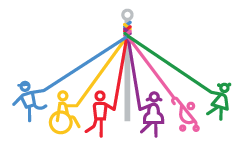If you are feeling concerned about a future transition, you can speak to your child's school or setting. You could ask for a meeting to discuss this and to identify any planning and support that is available. We can help you to prepare for a school meeting.
Make sure you know who is responsible for the transition work and planning at the current school or setting. You should be in regular communication them, so that you know what is being shared and put into place for your child.
You could make suggestions for things that you feel will help your child with the transition. This could include asking for things such as:
- A transition book with photographs of the new classroom, setting or staffing
- Information on what to expect and who will be your new contact in the new class, school or setting
- A copy of the transition plan that you can share with your child to help them feel prepared. Including visual aids and photographs if needed.
- whether there will be any visits or settling sessions to the new environment, and how these will be supported.
It’s also important to make sure that your child's voice is also heard. We advise talking to them about how they feel about a transition and think about what might make them feel more prepared for it.
